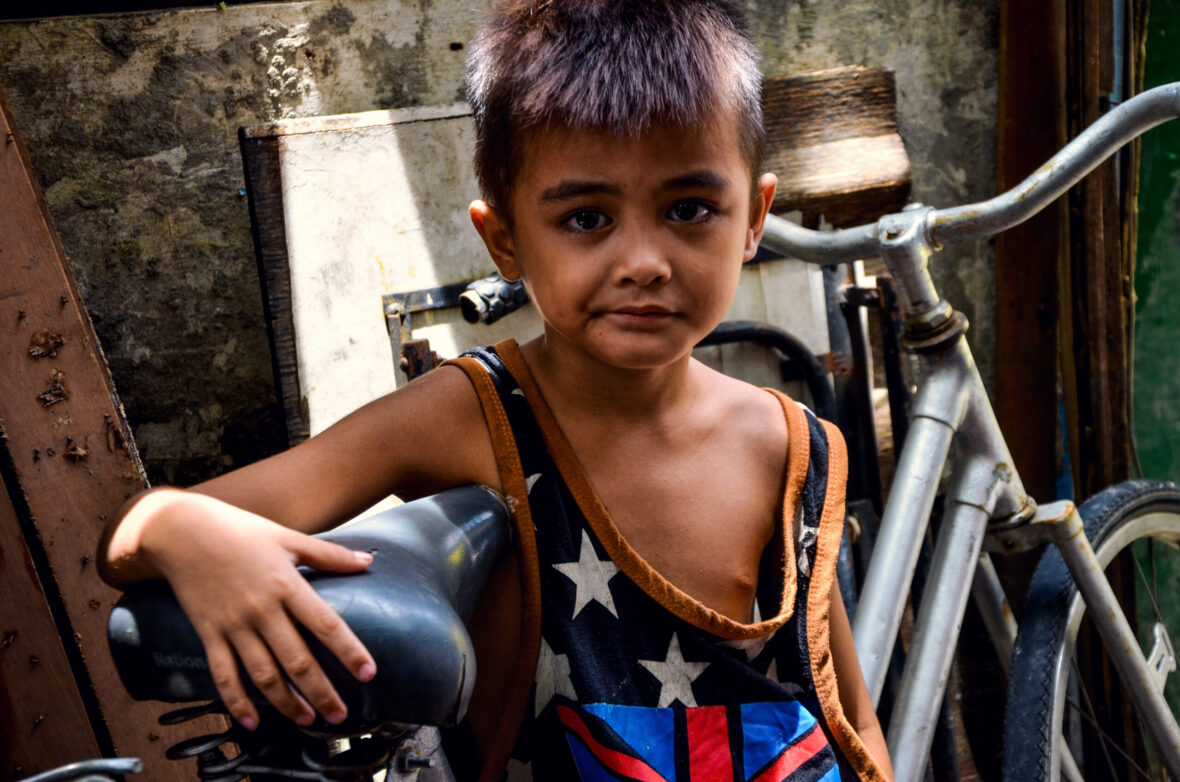Without parents, school or a safe place to call home, life for children living rough in the Philippines becomes all about survival.
Standing quietly on his own outside the gates of the orphanage is a somber, barefoot boy. He looks about five but is probably closer to seven – inadequate nutrition means children growing up on the street are usually small for their age – and his singlet and shorts are grey with grime. It’s his eyes, though, that really tell his story. Dark and troubled, framed by a frown, they’re the eyes of a child who has already seen too much.
The boy shyly holds out his hand – he lacks the confidence of seasoned Manila street children who jump on and off jeepneys, gather around in groups calling ‘ma’am! ma’am!’ with hands outstretched, and scamper off with pesos in hand.
Who can resist the urge to help? I hand over enough pesos for him to buy corn from one of the vendors plying the streets on tricycles, or perhaps a bowl of porridge. “Salamat,” he mumbles, pulling the money in close.
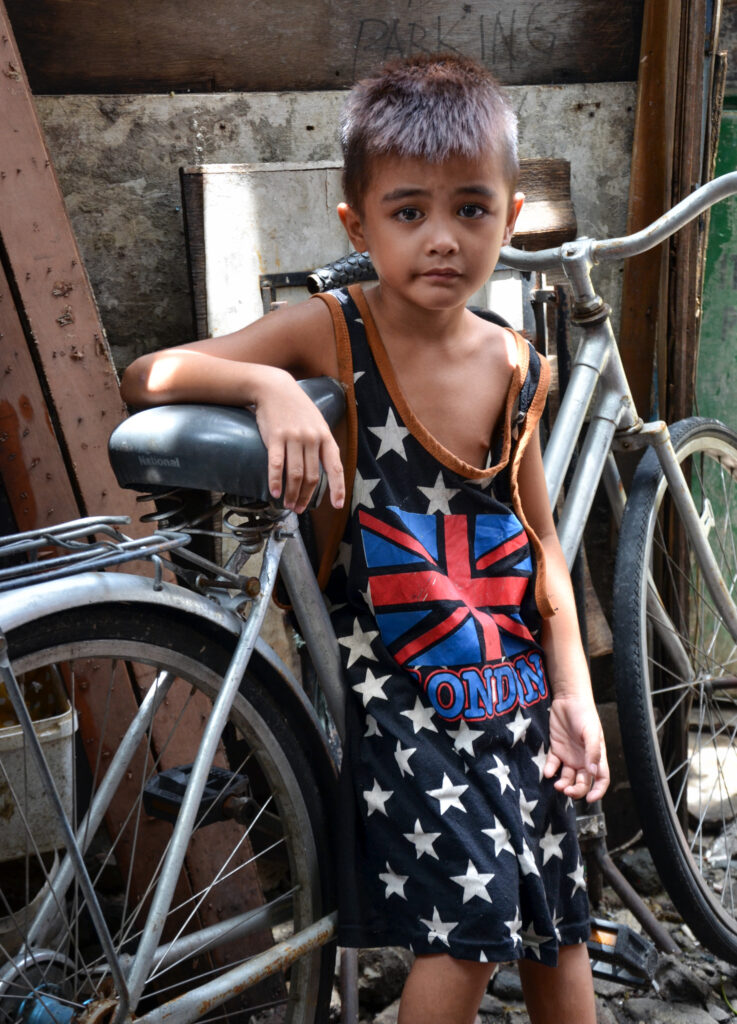
Through the bars of the orphanage, the boy whose name I later learn is Jan-Jan can see children laughing, singing, learning and playing. Saved from neglect, abandonment and poverty, these kids are the lucky ones.
Enquiries into Jan-Jan’s wellbeing a few days later reveal he has a place to call home – but ‘home’ is a relative term. He lives in a vacant lot down the street that squatters have turned into a maze of rooms with whatever bits of wood, cardboard and tin they’ve been able to find. I venture inside, stepping over puddles and rubbish and around a trio of young teens playing well-worn cards on a square of old rug in the dirt. A man points into a tiny room, dark and damp. In the corner is a series of planks nailed to the wall, which lead up through a manhole into another room above where Jan-Jan reportedly sleeps. I gesture that I’d prefer him to come down, if he’s willing.
When Jan-Jan pops his head out, a woman hovers nearby. She’s his aunt, I learn, and is holding Jan-Jan’s baby brother in her arms. Jan-Jan’s father was arrested in front of him – whether for possession of illegal firearms, drugs, or both is unclear – and his mother abandoned him and his three-day old brother a year ago, leaving his aunt little choice but to step in as their guardian.
Ironically, Jan-Jan tells me he wants to be a policeman when he grows up. Without going to school, however, his prospects are limited.
Jan-Jan is one of countless children and families living on the streets and in makeshift shelters in and around Manila. And the situation is only likely to get worse. Since assuming office last June President Rodrigo Duterte has been targeting the urban poor to stamp out drugs, leading to the death of 5600 people and the arrest of almost 100,000 more. Children are often the unwitting victims.
Helping street kids
“I’m so mad, I’m so mad,” says Dominique Lemay, founder of Virlanie, a Manila-based foundation dedicated to caring for street children. I’m interviewing him in the back of a truck in Delpan, one of Manila’s poorest neighbourhoods. Virlanie runs a mobile school for street kids here three afternoons a week, helping parents and guardians arrange birth certificates for children and to enrol them in school, along with bringing some joy to the 50 or so street kids who show up regularly for lessons, singing and nutritious food.
Lemay founded Virlanie in 1992, after visiting from France on a three-week project for NGO Caritas. Like many people living in the Philippines, he’s angry about the ruthless approach the police are taking to ‘wipe out’ drugs, a problem President Duterte now admits is far bigger than he anticipated. Aside from the arrests that take parents away from their children, newspapers report police killings of drug suspects almost daily. Children are often present.
“The worst is what happens to the children; they are traumatised for all their lives,” Lemay says.
The worst is what happens to the children; they are traumatised for all their lives.
Dominique Lemay
Lemay was moved to help street children after seeing girls as young as six forced into prostitution, children in jails so crowded they couldn’t lie down to sleep, and kids living in extreme poverty on the street after being abandoned or neglected by their parents.
“It touches you,” he says. Over the past 25 years, Virlanie has cared for some 17,000 Filipino children in need. Its quest? To turn street children’s lives around by giving them the confidence and sense of self-worth they deserve, empowering them with an education and life skills, and helping them to look forward to a brighter future.
Lemay has a particular soft spot for special needs children. Along with maintaining funding for Virlanie’s seven homes and programs in and around Manila for street children, he is raising funds to buy a farm for the 70-plus special needs children currently under Virlanie’s care.
“We love them as they are; everyone is important,” says Lemay, in his heavily French-accented English. “It is also my philosophy to say we have to love these children as our own.”
Safe homes
I visit several of Virlanie’s homes to learn more and, although I arrive expecting to feel sorry for the children who’ve ended up here, I leave with a gladdened heart. These kids are in loving hands. Each centre caters to specific age clusters and there are around 25 children in each. Paid houseparents and aunties oversee their wellbeing, and the children are kept busy with activities, chores and nutritious meals when they’re not in school.
Virlanie mobile unit lead Marie-Francoise Michel says it varies from year to year how many children they take in and they try to reunite street kids with family members wherever possible. Of those who do end up at one of Virlanie’s homes, a few are adopted to local or overseas families and some are there temporarily until a parent can get back on their feet, but many stay until adulthood – at which time a four-phase program ensures they are supported into independent living and go on to study or work.
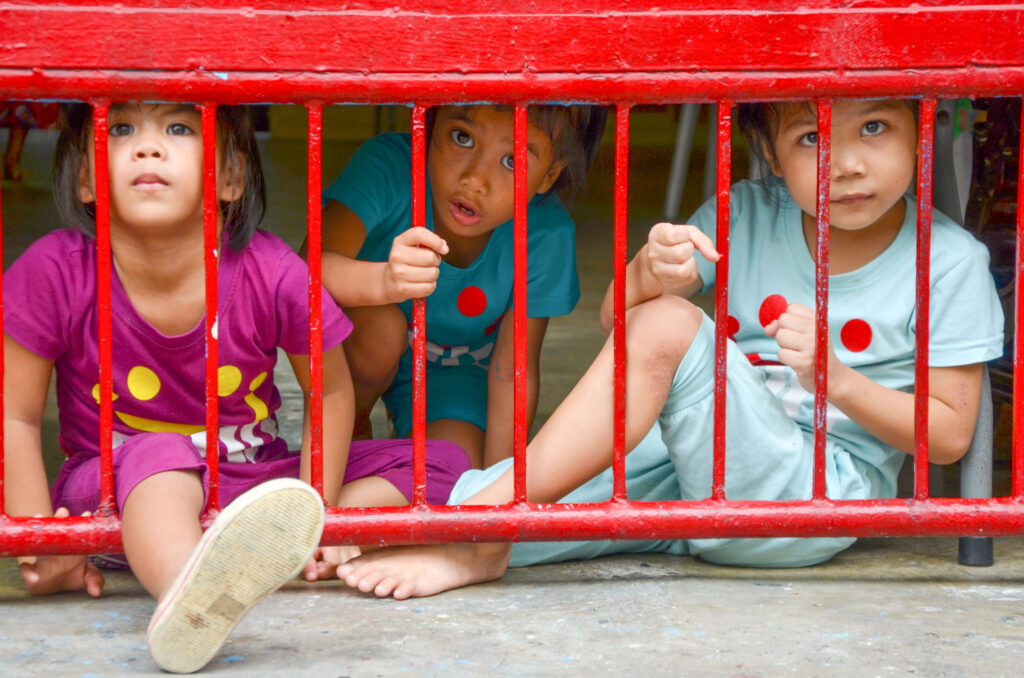
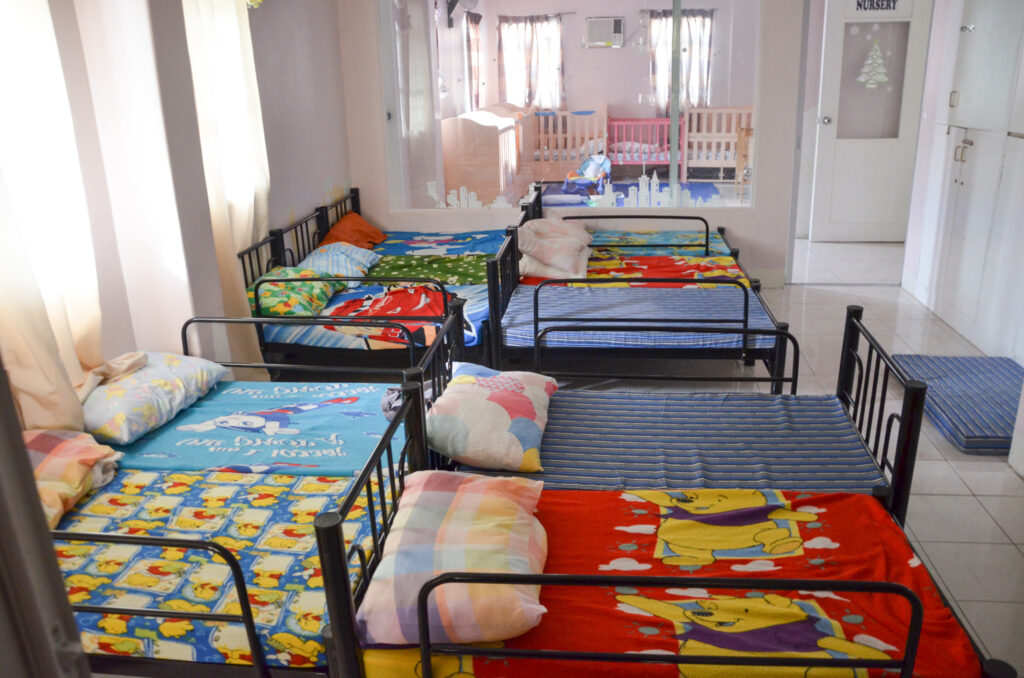
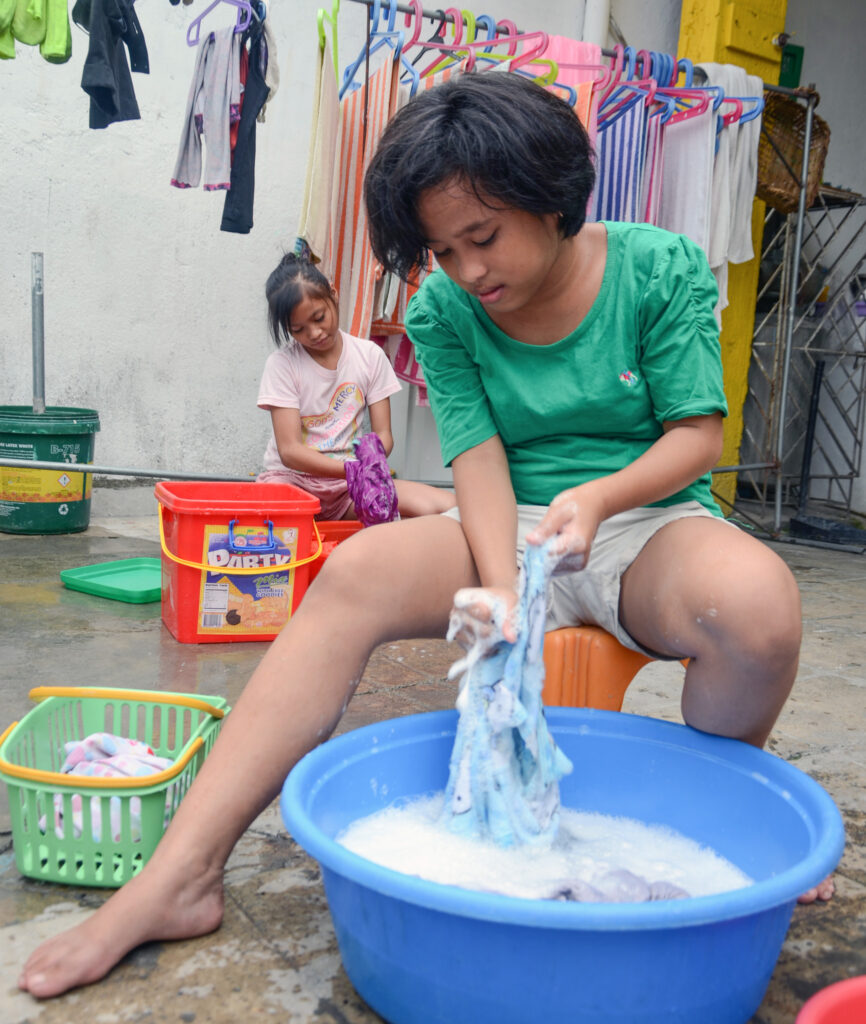
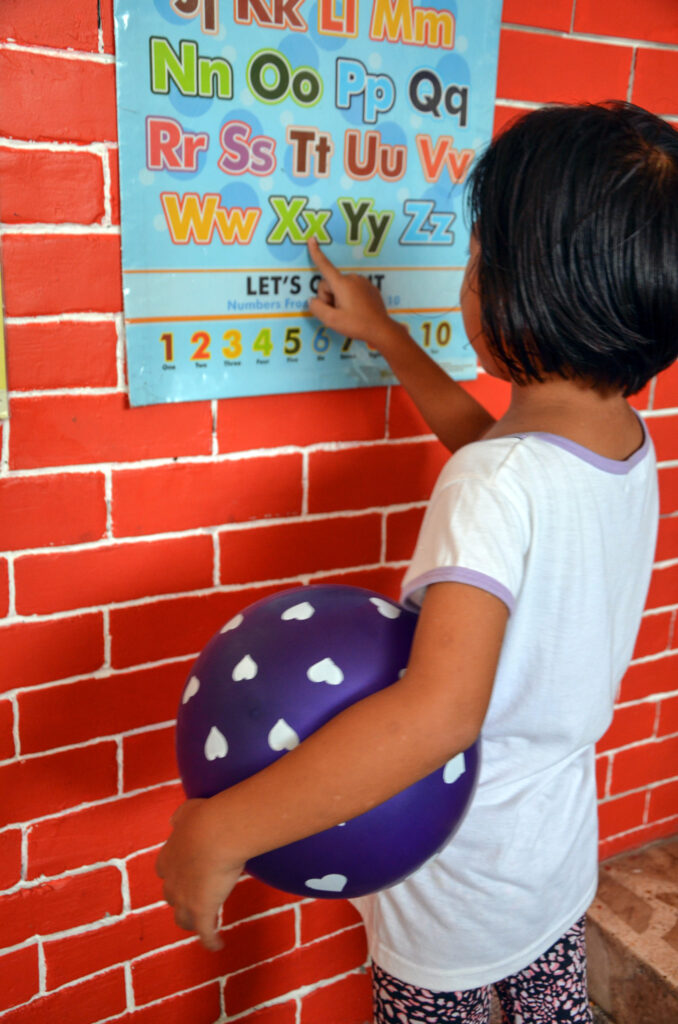
At one of the homes, called ‘Happiness’, I meet 13-year-old Alyssa* who with 9-year-old Angelica* is washing clothes in buckets of sudsy water in the concreted front yard. Alyssa was found lying in the street suffering from asthma at age 7. She is now in school, receiving extra tutoring, and belongs to the Virlanie choir. Angelica’s mother died from a heart attack two years ago and her father is in jail for theft. She and her brother and sister were placed in the care of an aunt but the aunt has five children of her own and the household’s meagre earnings (she is a street vendor and her husband is a ‘helper’) of $8 a day wasn’t enough to support three additional children.
Each child has a story to tell but all have hardship in common. Many of the children push and shove each other and find it difficult to sit still – hyperactivity and bullying is a byproduct of a challenging beginning to life. “It’s a violent environment on the street; it’s easier to attack than be attacked – that’s the way they survived,” explains Michel.
It’s a violent environment on the street; it’s easier to attack than be attacked – that’s the way they survived.
Marie-Francoise Michel
Behavioural issues are also telltale signs of child who is trying to cope with stress, particularly when they first arrive. “It takes time for them to understand that’s not the way to manage your emotions,” Michel says.
Each child is assessed by a psychologist and supported with ongoing psychotherapy sessions. The psych team meets weekly with the house parents to communicate how best to support each child, and the SiBuHi enrichment program enables children to develop their talents in art and music – and to express their feelings through creativity and begin to heal.
“Self-esteem is usually the main problem,” Michel says. “Most of the time they have been abandoned or not taken care of properly. To overcome fear and anger – that’s the main work for the child to do to one day become successful.”
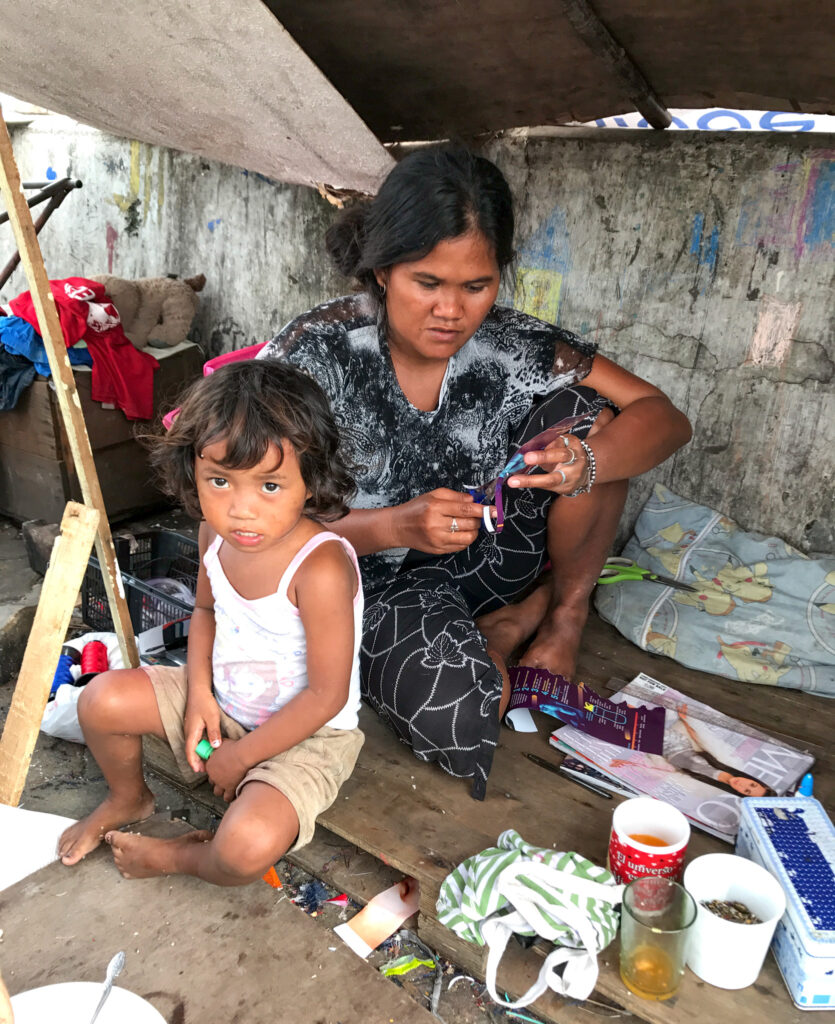
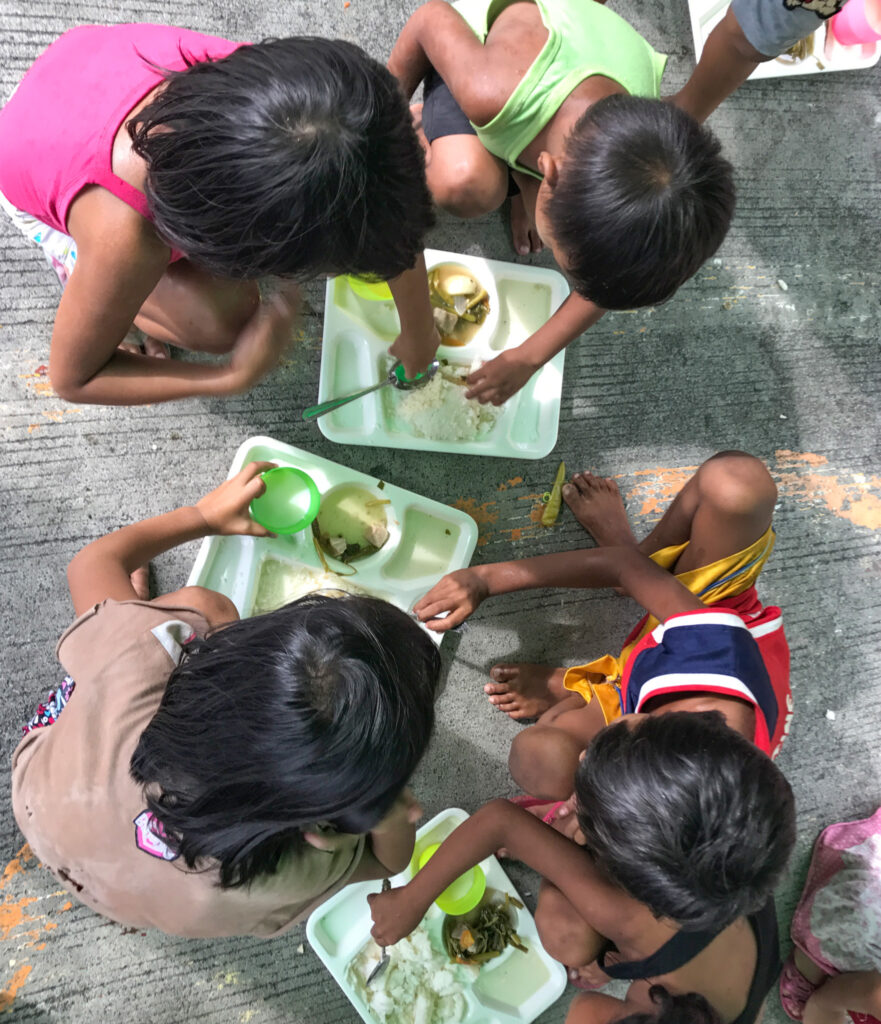
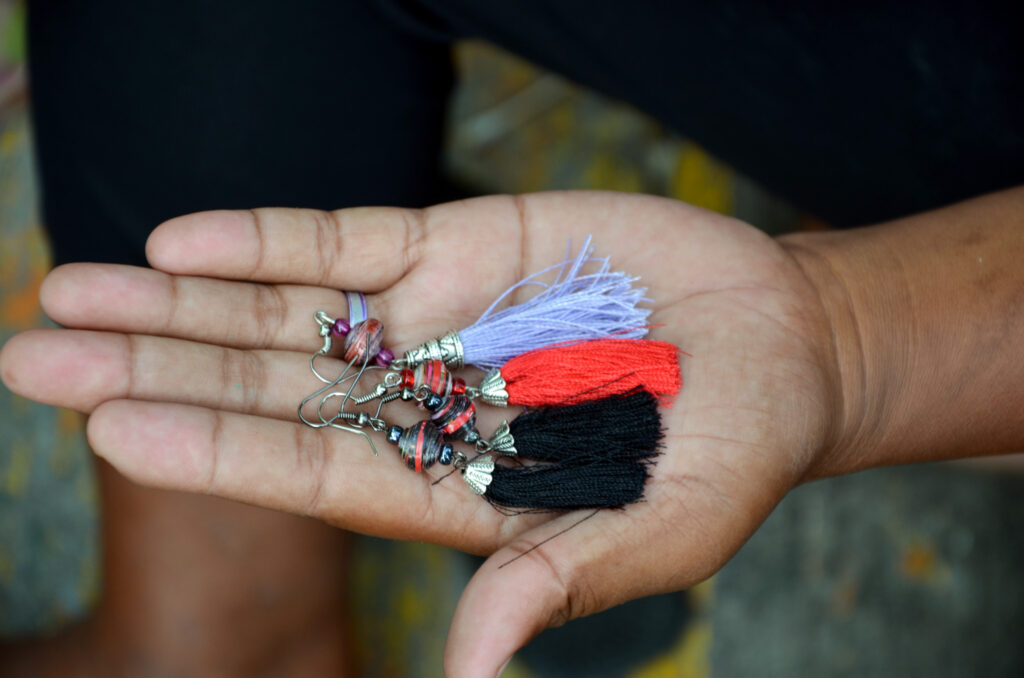
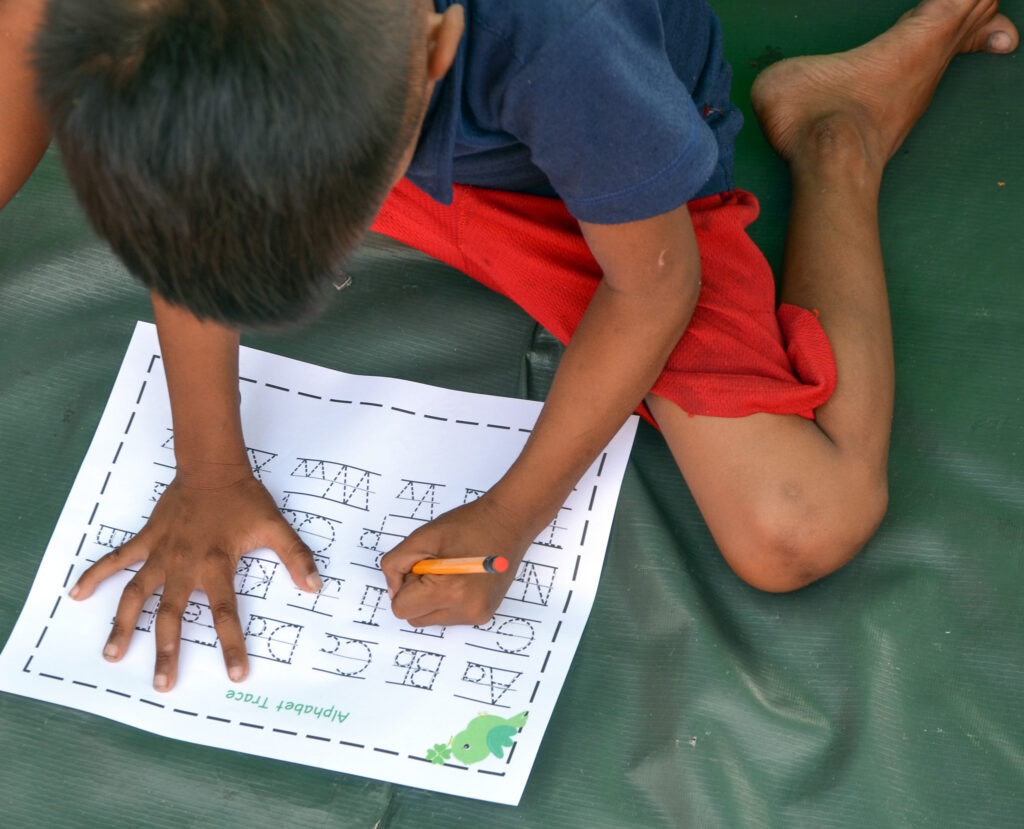
Mobile school
Michel runs the mobile school unit in Delpan and gets to know many of the street families in the area. One of the unit’s aims is to give children an appetite to go to school. “We use play to get them interested; it’s important to help them understand how important education is to their future.”
I accompany Michel as she visits several squatter families living along the river. Their cobbled-together dwellings are not high enough to stand up in and many are open to the street. The families make do with what they have, despite lacking electricity, running water and adequate shelter from heavy rain and sweltering temperatures. Rubbish is strewn about; underwear is draped on old coat hangers to dry; naked, barefoot children meander about, their teeth brown with rot and their heads itchy with lice.
A little girl sits by her mother eating a dish of rice. Her mother earns money by making earrings, necklaces and bracelets out of old magazine pages and selling them through Virlanie, which also provides medical and dental services to families in the area.
After a while you don’t really see the environment, you see the people. The more you know them, the more you care.
Marie-Francoise Michel
Michel chats and smiles and enquires after the woman’s wellbeing, seemingly oblivious to the squalid surrounds. “After a while you don’t really see the environment, you see the people,” she explains later. The former school teacher has dedicated her life to these families. “The more you know them, the more you care,” she says, shrugging. On our way back to the mobile school she stops a boy walking on his own to check that he has somewhere to call home.
Many of the children are born to parents who themselves grew up on the streets – it’s the only life they know – and consume mostly cheap, processed food and soft drink. Squatters also face the uncertainty of how long they will be able to live where they are – they know their homes could be demolished at any time without notice. No one wants unsightly shanties in their neighbourhood.

